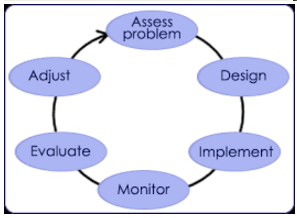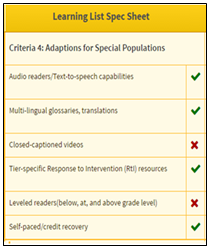We recently gave a presentation about three trends we are seeing in instructional materials. This blog post discusses the first: trends we are seeing in RtI materials.
 The goal of Response to Intervention (RtI) is to bridge the gap between the breakdown in a student’s understanding of concepts or skill development and current grade level expectations.
The goal of Response to Intervention (RtI) is to bridge the gap between the breakdown in a student’s understanding of concepts or skill development and current grade level expectations.
We have observed that while RtI materials do a good job of spiraling instruction back to lower grades where the student’s knowledge deficit began, the materials do not always bring the student up to the current grade level.
Another observation is that materials designed for RtI typically do not address all grade level standards. Teachers must know which standards a material does not address so that they do not inadvertently use that material to reteach those standards.
Our next observation: “adaptive” does not necessarily mean “aligned.” Some RtI materials are “adaptive,” meaning that the material customizes instruction with built-in flexibility to permit students to take various routes to, and the amounts of time for, individualized learning (Wang & Lindvall, 1984). The path of learning is prescribed according to the students’ learning needs, as indicated by their responses to questions, tasks and experiences most often determined in a diagnostic assessment.
We commonly find that lessons listed in RtI materials (i.e., the lessons that make up students’ customized learning pathways) are not aligned to the standards they intend to teach. Students cannot learn what they’re not taught. If an adaptive RtI material is not aligned to the standards a student is struggling with, the material will not help the student learn the knowledge and/or skills he or she is lacking.
The bottom line: When using an adaptive RtI material, don’t set and forget. If you want that material to effectively remediate your students’ learning gaps, you must ensure that the lessons in each student’s pathway are aligned to the standards the student is struggling with.
Lastly, “adaptive” does not mean that the material has adaptions for each of the special student populations. Here, for example is the section of our Spec Sheet for a popular adaptive RtI material showing that this product does not have leveled readers.
We hope these observations, as well as our prior blog post on the same topic; will help you use your RtI materials most effectively to remediate your students learning gaps.